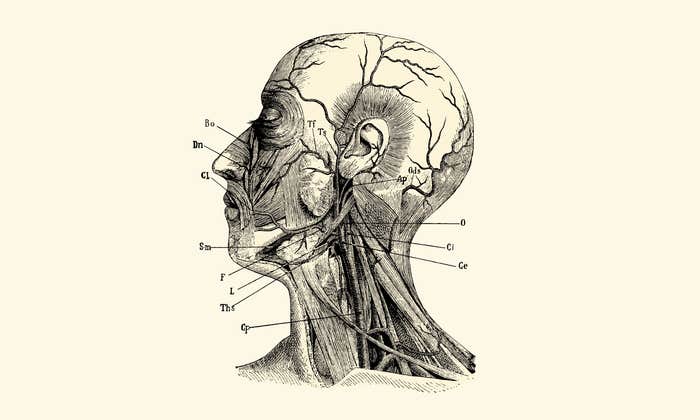
My family had lived in America for only a handful of years when my grandfather had a heart attack. It was the early 1980s, before statins and baby aspirins were routinely prescribed to delay the abnormal hardening, or sclerosis, in Bapu’s vessels, and before the advent of cardiac catheterization that may have precluded the much more invasive (think rib spreaders) coronary artery bypass graft that the doctors later offered him.
It was also before doctors had learned to talk to their patients like consumers, rather than children. Bapu was fluent in the Queen’s English, but looking back—I was a child at the time—that was likely irrelevant. I’m confident his doctors would not have spoken to him with the same candor and clarity that doctors today use to explain procedures and obtain consent. How much he would have understood about the procedure, and its risks and alternatives, would have been very different than what he might expect to understand today. Had I been a fly on the wall, I may have heard his cardiovascular surgeon say: “Mr. Barot, you’ve had a heart attack and we need to perform a surgery on your heart, otherwise you may die in a matter of months.” Bapu may have been alarmed by the doctor’s declaration, but he would have quickly consented, a firm believer in the life-lengthening capacity of advanced therapeutics.
It’s hard today to imagine this—a time when a physician could, unilaterally, decide what to do for a patient, or to them, without first considering the patient’s views about their own medical care. Historically, many patients were even in the dark about their diagnoses. In a survey of Philadelphia-area physicians from 1953, 70 percent either never told or usually did not tell their patients that they had been diagnosed with cancer. The culture was such that many physicians feared that revealing the diagnosis of cancer was tantamount to a psychological death sentence, assuming—falsely, in fact—that informed patients fare worse.
Informed patients may not always choose the most healthful option…
A few years later, in 1957, Salgo v Stanford finally prodded doctors toward telling their patients what was going on. The plaintiff in that court case, Martin Salgo, woke up after an aortography with paralyzed legs. The courts ruled that Mr. Salgo was not properly informed of the risks of the procedure and therefore was justified in holding his doctors responsible for the outcome. The legal and ethical basis for the informed consent that doctors and patients take for granted today was a direct result of this trial.
What’s interesting about the court’s judgment was that it still recognized the doctor’s perspective. The practitioner’s obligation to inform the patient of the sundry risks, as the court put it, “may well result in alarming a patient who is already unduly apprehensive and who may as a result refuse to undertake surgery in which there is in fact minimal risk.” It is a concise acknowledgement of what the cardiologist Lisa Rosenbaum, in a piece in The New Yorker, refers to as the role of the “affect heuristic” in medical decision-making—the idea that emotions influence how patients understand risks and benefits. Informed patients may not always choose the most healthful option, and it may fall on the physician to know when those emotions are at play.
Informed consent, in other words, has its limits. It isn’t always ideal to treat the patient as a consumer in the decision-making process. I have witnessed countless physicians-in-training offer a therapy and describe its risks, benefits, and alternatives as if they were providing menu options at the local trattoria. Their patients, in turn, merely nod and either consent or refuse to proceed with the intervention with little to no guidance. “If the paternalistic model leaves the patient outside the decision-making process, the informed [consent] model leaves the physician outside,” limiting the role of the physician to one of “information transfer,” wrote Cathy Charles, an epidemiologist and biostatistician, in a seminal paper from 1997 with colleagues from McMaster University. What is glaringly absent from many of these encounters is a process that values the perspective of both the patient and the physician.
In response, models of medical decision-making have continued to evolve. If one imagines a pendulum, with the more historic, physician-dominated paternalism on one end of the swing, and the more recent, patient-centered informed-consent model on the other end, the newest model—shared decision-making—brings us closer to an equilibrium between the extremes. Alexander Kon, a practicing pediatrician and professor at UC San Diego, and colleagues, described the model in a consensus statement last year as a, “collaborative process” between patients, or their surrogates, and clinicians that takes “into account the best scientific evidence available, as well as the patient’s values, goals, and preferences” in making medical decisions.
Was I properly guiding my patient toward a safer harbor?
Even this model has its costs. In a 2006 study vetting it, titled “What Is the Impact of Shared Decision Making on Treatment and Outcomes for Older Women With Breast Cancer?”, Jeanne Mandelblatt and colleagues note that, in the context of breast cancer treatment, patients who more or less made decisions with their doctors (as measured by their scaled responses to statements like, “My surgeon asked me about my worries about breast cancer”) were more likely to receive recommended adjuvant (secondary to initial) treatment, and to have greater short-term satisfaction. However, they also reported that their breast cancer was more burdensome. “It is possible,” the authors speculated, “that women who took a more active role in their treatment decisions were, by nature, more concerned about their health and more worried about the disease.”
In my own practice, I’ve found myself on occasion tugging the decision-making pendulum back toward the paternalistic end of the arc.
I recently saw an 84-year-old woman who possibly had lung cancer—I found a mass in her lung. We discussed this as well as the invasive procedures that would be required to confirm my suspicion. She was fairly healthy, and had no symptoms from the lung mass, so it wasn’t clear to her how the mass was harmful. She was nervous and wary of a lung biopsy that held potentially serious complications. On the other hand, she usually went along with the advice of her doctors. Although I did my best to understand her ambivalence and what was important for her moving forward, I felt that she wanted me to guide her to the “right” decision, the one that optimized her welfare. What I did in this situation surprisingly came from the world of behavioral economics.
In 2003, Richard Thaler and Cass Sunstein introduced the idea of libertarian paternalism. It’s a false assumption “that people always make choices that are in their best interest,” they noted, and a misconception that “paternalism always involves coercion.” It’s acceptable, they argued, for the party that possesses greater information to “nudge” the party with less information, by manipulating the architecture of the choice, toward the decision that produces the greatest benefit. For example, take the policy of “presumed consent.” There is a several-fold higher chance that people will donate their organs when they die if they are automatically opted-in to this choice. They still retain the freedom to opt-out of donating, but the architecture of the choice is altered to favor the greater public good.
For my patient with the lung mass, I decided to nudge her against a biopsy as I felt this was the best choice to ensure her welfare: An aggressive diagnostic approach at her age, 84, was too high-risk. When I told her my recommendation, I saw her loosen her tight grip on her purse, her relief as palpable as her gratitude. Was I being manipulative? Or was I properly guiding my patient toward a safer harbor? I summoned a bit of the paternalistic approach of my grandfather’s surgeons, but without the coercion and informational asymmetry of that bygone era, while still honoring my patient’s freedom to choose (by leaving the option of a biopsy on the table). Bapu trusted his heart surgeons and benefitted tremendously—he lived for another 20-odd years in fairly good health. I trust that my patient and I have made the right decision for her, too—together.
Nikhil Barot is an Assistant Clinical Professor of Medicine at the University of California, Los Angeles and a physician at Olive View-UCLA Medical Center.
This article was originally published on Cancer Focus in May 2017.


























